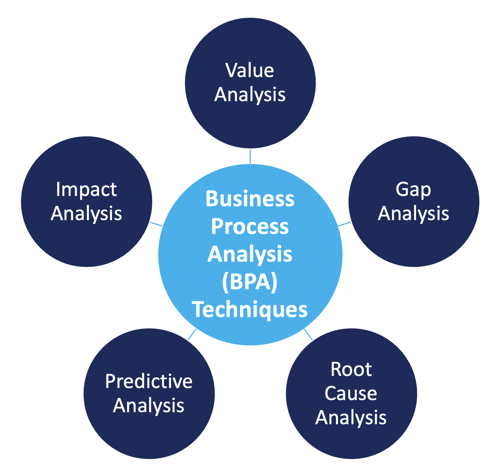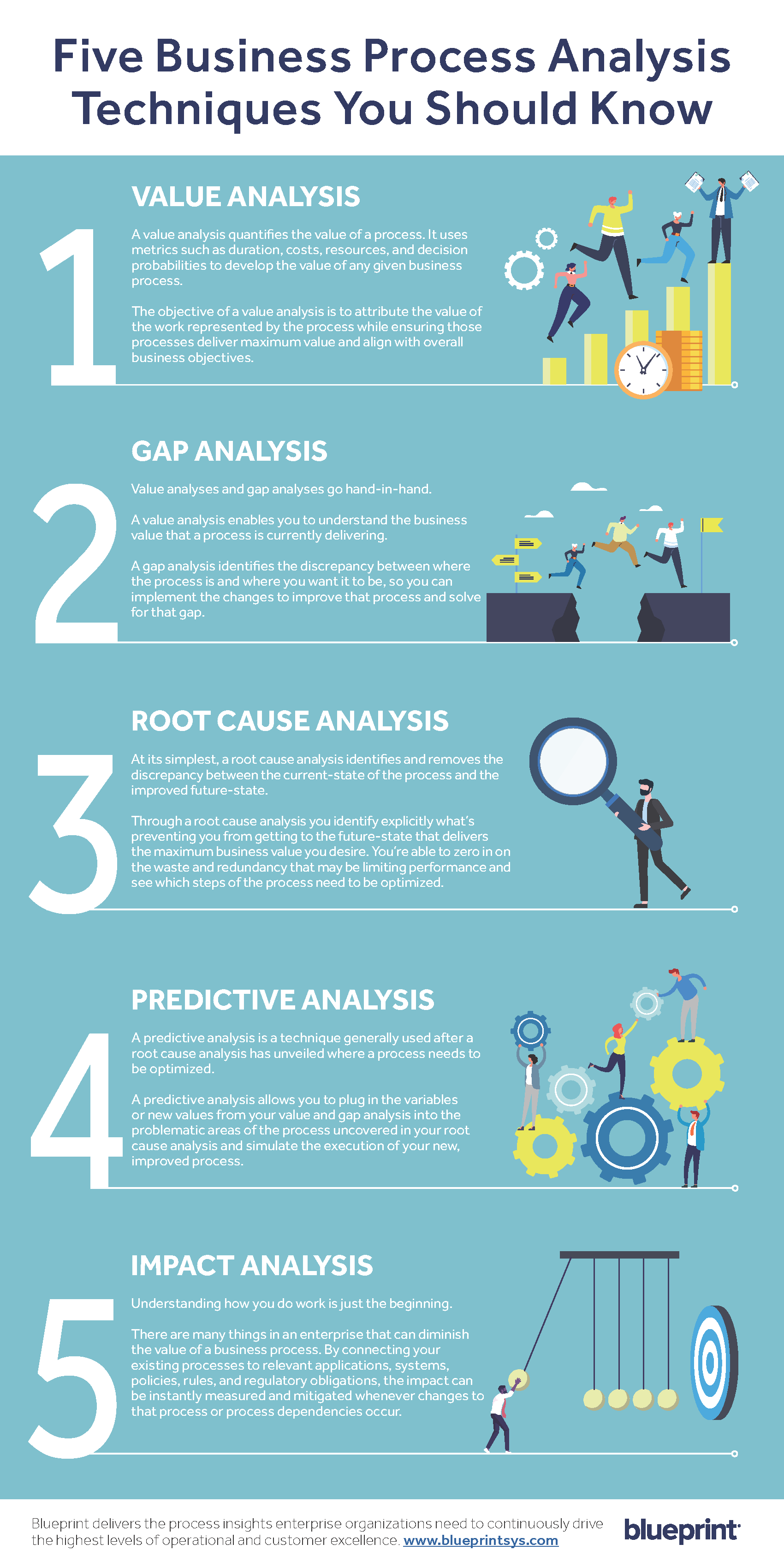5 BPA (Business Process Analysis) Techniques You Should Know
Business Process Analysis (BPA) is gaining more and more momentum in the enterprise, and for good reason. Organizations need to understand how they complete work to become more efficient and reduce costs.
That’s the end goal but getting there requires a bit more structure. It’s one thing to gain the ability to understand how work gets done; it’s another to effectively analyze that work and find ways to drive improved efficiency with better processes and an improvement strategy.
To deliver those outcomes, these 5 common Business Process Analysis techniques can be applied to your BPA efforts today to see immediate results and make better business decisions.

1. Value Analysis
A value analysis quantifies the value of a process. It uses metrics such as duration, costs, resources, and decision probabilities to develop the value of any given business process.
Suppose these metrics aren’t readily available at the source. In that case, any good EBPA (Enterprise Business Process Analysis) solution should have the predictive and simulation capabilities that allow you to plug these metrics in and both understand and visualize the value these business processes are driving.
The objective of a value analysis is to attribute the value of the work represented by the process while ensuring those processes deliver maximum value and align with overall business objectives.
2. Gap Analysis
Value analyses and gap analyses go hand-in-hand.
A value analysis enables you to understand the business value that a process is currently delivering. Then you can determine where you want to be—that is, determine how much value the process should actually be delivering, whether it be using fewer resources, quicker execution times, less variances, a decrease in manual errors produced, etc.
A gap analysis identifies the discrepancy between where the process is and where you want it to be, so you can implement the changes to improve that process and solve for that gap.
3. Root Cause Analysis
At its simplest, a root cause analysis identifies and removes the discrepancy between the current-state of the process and the improved future-state.
It’s similar to a gap analysis; however, a root cause analysis identifies explicitly what’s preventing you from getting to the future-state that delivers the maximum business value you desire. It allows you to zero in on the waste and redundancy that may be limiting performance and indicates which steps of the process need to be optimized.
Where a gap analysis reveals that the process duration is too long, a root cause analysis enables you to analyze and determine which process steps are creating delays and bottlenecks, so you know what needs to be rectified to produce an improved process that aligns with your business objectives.
4. Predictive Analysis
A predictive analysis is also known as a simulation analysis. It’s a technique generally used after a root cause analysis has unveiled where the process needs to be optimized.
A predictive analysis allows you to plug in the variables or new values from your value and gap analysis into the problematic areas of the process uncovered in your root cause analysis and simulate the execution of your new, improved process.
As previously mentioned, any EBPA solution worth your investment should have the predictive analytics and simulation capabilities that allow you to plug values into your process and measure simulated performance.
Simulation and predictive analyses enable process improvement stakeholders to close the gap before deciding on the best process improvement strategy, whether it be modernization, optimization, standardization, or automation.
5. Impact Analysis
When considering process improvement, most analyses are usually concerned with value metrics. The inter-relatedness of processes and all the systems and applications they interact with typically take a back seat.
Change is a constant in any organization. In heavily-regulated industries like financial services, banking, insurance, or life sciences, these enterprises are subject to constant regulatory change. For all other companies, systems and applications are under continuous evolution.
Beyond understanding how you do work, it’s crucial to understand the dependencies those workflows have.
There are many things in an enterprise that can diminish the value of a business process. For example, a $10 million penalty can wipe out any value a non-compliant process might have delivered.
By connecting your existing processes and process steps to relevant applications, systems, policies, rules, and regulatory obligations, the impact can be instantly measured and mitigated whenever changes to the process or process dependencies occur.
Just as important, these dependencies can be considered during process improvement initiatives by running impact analyses.
To see some of these business process analysis techniques in action, watch the short demo below:
Share this
Recent Stories

BPA vs. BPM: What’s the Difference?

4 Automation Challenges that Business Process Analysis (BPA) Solves
